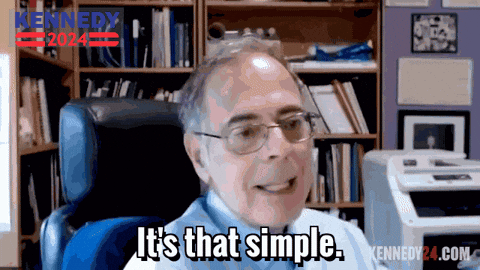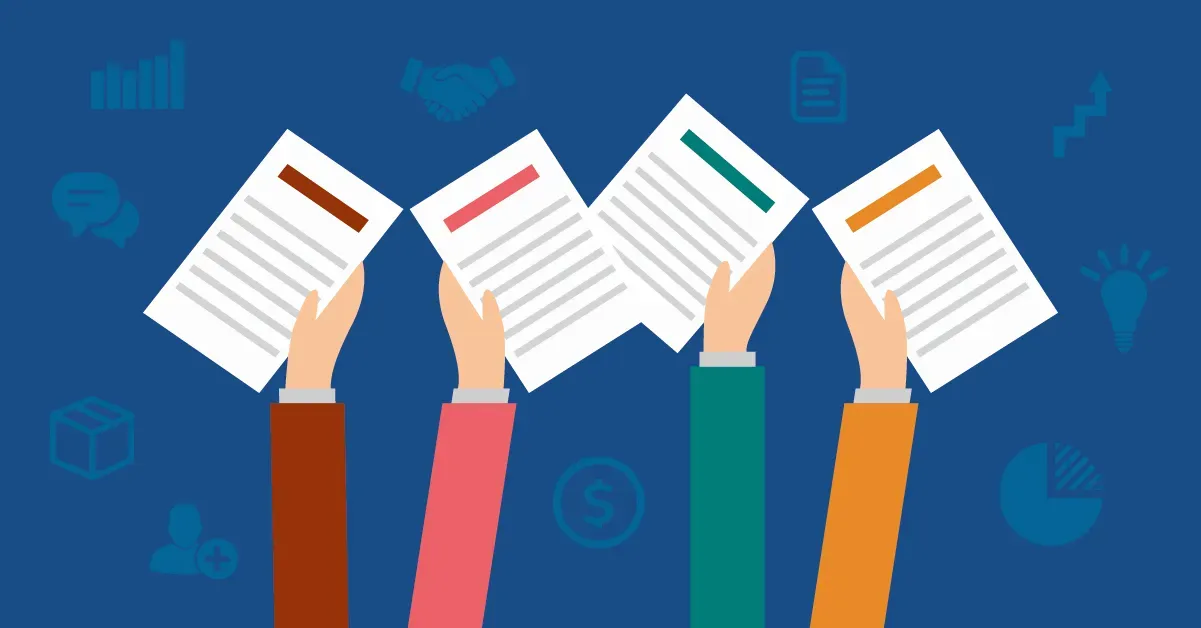How to Write a Sales Proposal That Actually Wins

So you've finally scored a meeting with that dream client you've been chasing forever. Congrats! 🎉 But wait—you've gotta write a sales proposal now. Yikes.
Relax! Writing proposals doesn't have to suck. With the right approach (and a dash of humour), you can create proposals that clients actually want to read—rather than using them as a cure for insomnia.
What's a Sales Proposal ?
Think of it as your pitch in writing. It's a clear, persuasive document outlining how your product or service can solve your client’s problems. It's not just a boring PDF with prices slapped on it—it's your chance to impress (or depress) your client into saying yes.
Here’s how you nail it:
Step-by-Step Guide to Writing a Killer Sales Proposal
If your sales proposal doesn’t grab attention fast and show real value, it’s game over. This guide walks you through exactly how to craft a proposal that’s clear, convincing, and impossible to ignore—step by step.
Ready to close the deal? Let’s go.
1. Spy on Your Market (Legally)
First, do a bit of market research. Check online forums, social media, and surveys. Ask existing customers for honest feedback. According to HubSpot, 69% of buyers feel sales reps could improve by better understanding their needs. Don’t skip this part, Sherlock.
2. The Must-Haves (Seriously, Include These)

You know that feeling when you pour your heart into a sales proposal and the client… ghosts you? Brutal. But chances are, the problem isn’t your service—it’s the way you’re pitching it.
Let’s be honest: most sales proposals read like a tax manual. Boring. Overly technical. Zero personality. If you want to actually win deals (and not just clog inboxes), your proposal needs to feel like a smooth conversation—not a lecture. That’s where this guide comes in.
Here’s what you actually need to include in a sales proposal that grabs attention, builds trust, and—yep—closes deals.
- Executive Summary (a.k.a. The Hook)
This isn’t the place for a 500-word company origin story about how you started in a garage. The executive summary is your “TL;DR”—a quick, punchy intro that tells the client:
- What problem you’re solving
- How you’re solving it
- Why that solution works
- Why you are the best person/company for the job
- Ballpark pricing (because let’s not pretend that’s not one of the first things they want to know)
Pro Tip: Write this part last, but put it at the top of your proposal. It’s like writing the movie trailer after the film is done.
Also: no jargon. If your grandma wouldn’t get it, rewrite it.
- What You're Selling (Without the Fluff)
Now that you've got their attention, it’s time to show off your product or service—but please, keep it short. Your reader doesn’t need a feature dump or a user manual. Just give them:
- A clear explanation of what your product/service does
- How it helps them (not just how cool it is)
- A sprinkle of credibility—mention happy clients, case studies, or even a humble brag stat like “Trusted by 500+ startups and still caffeinated”
Remember, the goal is to make the reader say, “Wow, I need this in my life.”
- Why Teaming Up With You is a No-Brainer
Think of this as your Tinder bio, but for business. Why should they pick you out of a sea of other vendors?
Share:
- A few quick wins or results from past clients
- Your secret sauce (not literally…unless you’re a food brand)
- A peek at your process and how it makes life easier for them
If you’ve got social proof—like logos, testimonials, or success metrics—now’s the time to name-drop.
- Clear CTAs
Don’t make them guess what to do next. Tell them. Boldly. Clearly. Kindly.
Instead of “Let us know what you think,” try:
- “Click here to book your free strategy call”
- “Review the attached scope, then hit ‘Accept’ to kick things off”
- “Download your free trial of our software and test-drive it yourself”
3. Outline Before You Write

Outline your proposal clearly:
- Client’s problem
- Your solution
- Pricing details
- Timelines and next steps
This outline stops you from rambling and keeps your proposal sharp.
4. Write It (Like You Talk)
Ditch the corporate fluff. Write conversationally and keep it simple. Persuade without hype. For example:
- ❌ “Our solution revolutionizes your sales.”
- ✅ “We’ll help you boost sales by around 20%, based on what our clients typically achieve.”
5. Proofread (Yes, Really)

Typos kill trust faster than bad Wi-Fi kills Zoom calls. Proofread your proposal, then proofread again. Better yet, bribe a friend to read it.
What Should Your Sales Proposal Include?
Writing a sales proposal shouldn’t feel like a chore—for you or your client. The best ones are clear, short, and make the client smile a bit (or at least not yawn).
Here’s what you should always include:
- Quick summary (tell them what's in it for them)
- What you're offering (no jargon, please!)
- Simple pricing (no surprises, ever)
- Terms of agreement (plain English works best)
- Clear timeline (because everyone hates guessing games)
Feel free to sprinkle in extra perks or custom services your client might love. After all, you're trying to impress them, right?

Simple Sales Proposal Format (Example)

Keep it simple—here's your new go-to format:
Title: Sales Proposal for [Client’s Company Name]
Subheader: Prepared by [Your Company Name], detailing exactly how we'll solve your problem, what it'll cost, and when we'll deliver.
About Us: At [Your Company Name], we're obsessed with solving one big problem: [state the main issue you tackle].
And we’re pretty good at it (ask around!).
What sets us apart? [Insert your secret sauce, but make it short and fun!]
Your Goals (and Why They're Tricky): After our chats, we know your main goals are:
You want to [goal], but you're stuck because [challenge].
You dream of [goal], but [challenge] keeps getting in the way.
We've helped [number of clients] businesses beat these exact hurdles.
How We'll Fix It:
Here’s the good stuff—our solutions:
Solution #1: [Make it sound easy and obvious]
Solution #2: [Keep it punchy and practical]
Solution #3: [The cherry on top!]
These solutions are built specifically for companies like yours—because nobody likes generic solutions.
Pricing Made Easy: Here's exactly how much it costs:
| Service/Product | What You Get | Price |
|---|---|---|
| Service #1 | Clear details here | $XXX |
| Service #2 | Straightforward info | $XXX |
(No fine print, we promise.)
When It All Happens: We’ll be in and out faster than your last Netflix binge:
Step 1: [Description], [Length], starting [Date]
Step 2: [Description], [Length], starting [Date]
What Clients Really Think: Don't just take our word for it—listen to these folks:
“They actually made us money instead of costing it!” – Happy Client, CEO
“Couldn’t have done it without these guys.” – Thrilled Customer, Marketing Director
Terms and Stuff: Our terms are simple—straight talk, no jargon, and a clear guarantee: [insert quick, clear conditions and guarantees].
Ready to Team Up? Let's tackle your challenges head-on. Here's how:
Enter your name:
Scribble your signature:
Today's date:
Need a quick chat first? Drop us a line at [email protected] or call us at 123-456-7890. No strings attached.
10 Tips for Writing Sales Proposals That Actually Sell

Let’s be real—your proposal is either a deal-maker or a one-way ticket to the “thanks, but no thanks” pile. If you want to land more yeses and fewer ghostings, your sales proposal needs to be clear, compelling, and laser-focused on your client’s needs.
Here’s how to write one that doesn’t just get read—but gets results.
1. Start strong
Ditch the drawn-out intros and company backstories. Your prospect wants to know one thing: how are you going to solve their problem? Open with a punch—highlight the pain point and position your solution as the fix, fast.
2. Keep it short and sweet
No one has time (or patience) for a proposal that reads like “War and Peace.” Stick to the essentials. Use bullet points, subheadings, and simple language to keep things skimmable and easy to digest.
3. Sell benefits, not features
Don’t just list what your product or service does—explain what it does for them. Instead of saying “automated analytics dashboard,” say “saves your team 10+ hours a week with real-time insights.” That’s what gets attention.
4. Make it personal
Use the client’s name, reference their business goals, and tailor the content to show you understand their unique situation. A cookie-cutter proposal feels lazy. A customized one feels thoughtful—and sells better.
5. Craft an irresistible offer
Give them a reason to act now. Throw in a limited-time discount, bonus service, or early-bird perk. Create a little FOMO (fear of missing out), and make your offer hard to resist.
6. Include clear CTAs (calls to action)
Want them to book a call? Sign the contract? Click a link? Spell it out. Don’t make them guess the next step—make it effortless and obvious.
7. Be upfront with pricing
Transparency builds trust. Break down your pricing so it’s easy to understand. No one wants to hunt for hidden fees or get hit with surprise costs later.
8. Use visuals
A wall of text is a guaranteed scroll-past. Mix in charts, graphs, screenshots, and mockups to help tell your story visually. A little design goes a long way in making your proposal stand out.
9. Proofread like a pro
Typos and grammar mistakes can kill your credibility. Read it out loud, use spellcheck, or better yet—have someone else review it. Polished proposals show professionalism.
10. Get feedback before sending
A second set of eyes can catch what you missed. Whether it’s a teammate, mentor, or your favorite AI assistant feedback can help you tighten your messaging and avoid missteps before your proposal hits the client’s inbox.
Request for Proposal (RFP) – What’s That About?

An RFP is a formal invite asking businesses to submit bids for a project. Think of it as companies shopping around, saying: “Convince us you're the best!” If you're responding to an RFP, make sure your proposal directly answers their questions and ticks every box clearly.
Final Thoughts
A well-crafted sales proposal can mean the difference between landing your dream client or being ghosted. And let’s face it, being ghosted sucks.
Oh, and here’s an extra tip: use tools like leadplay.io to automate your outreach, track proposals, and close deals faster. Leadplay handles the boring bits (like endless follow-ups), freeing you to focus on being awesome.